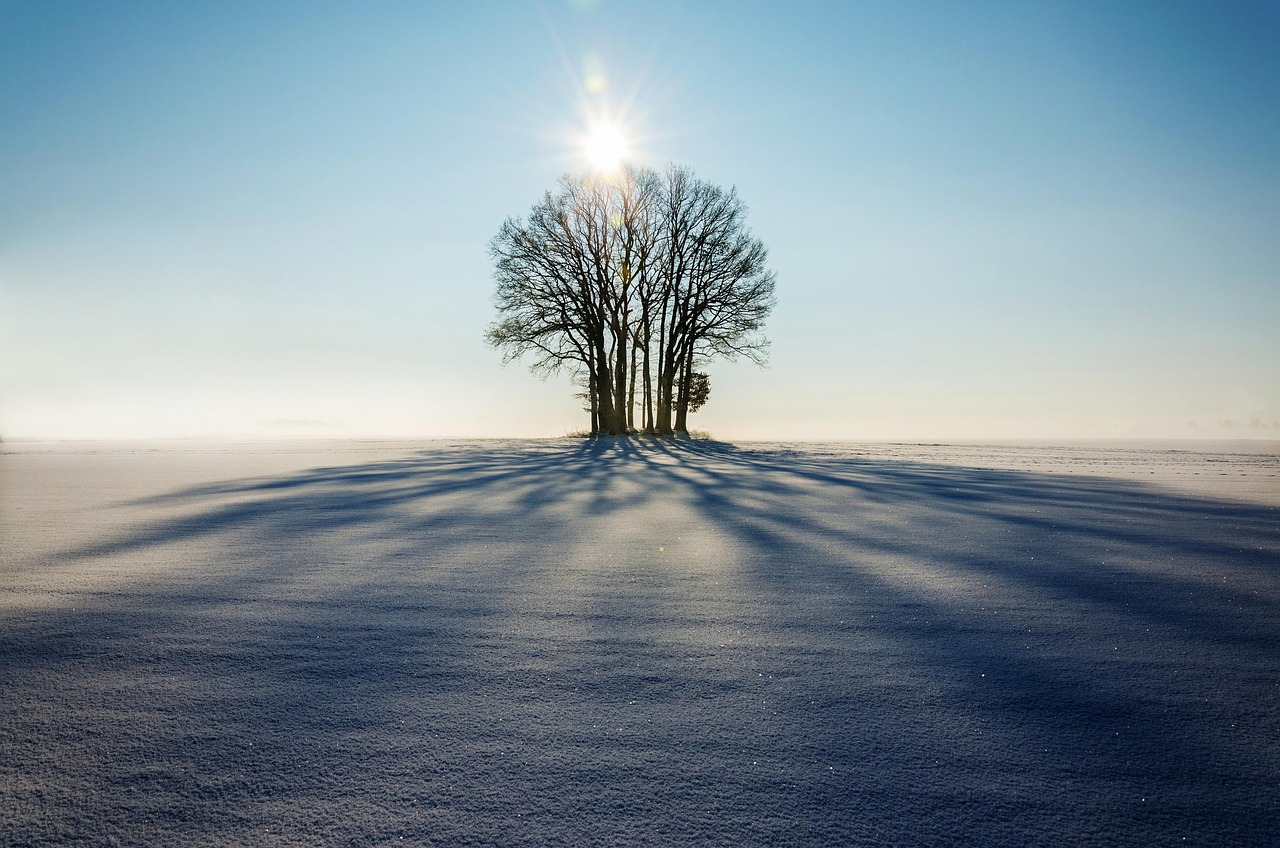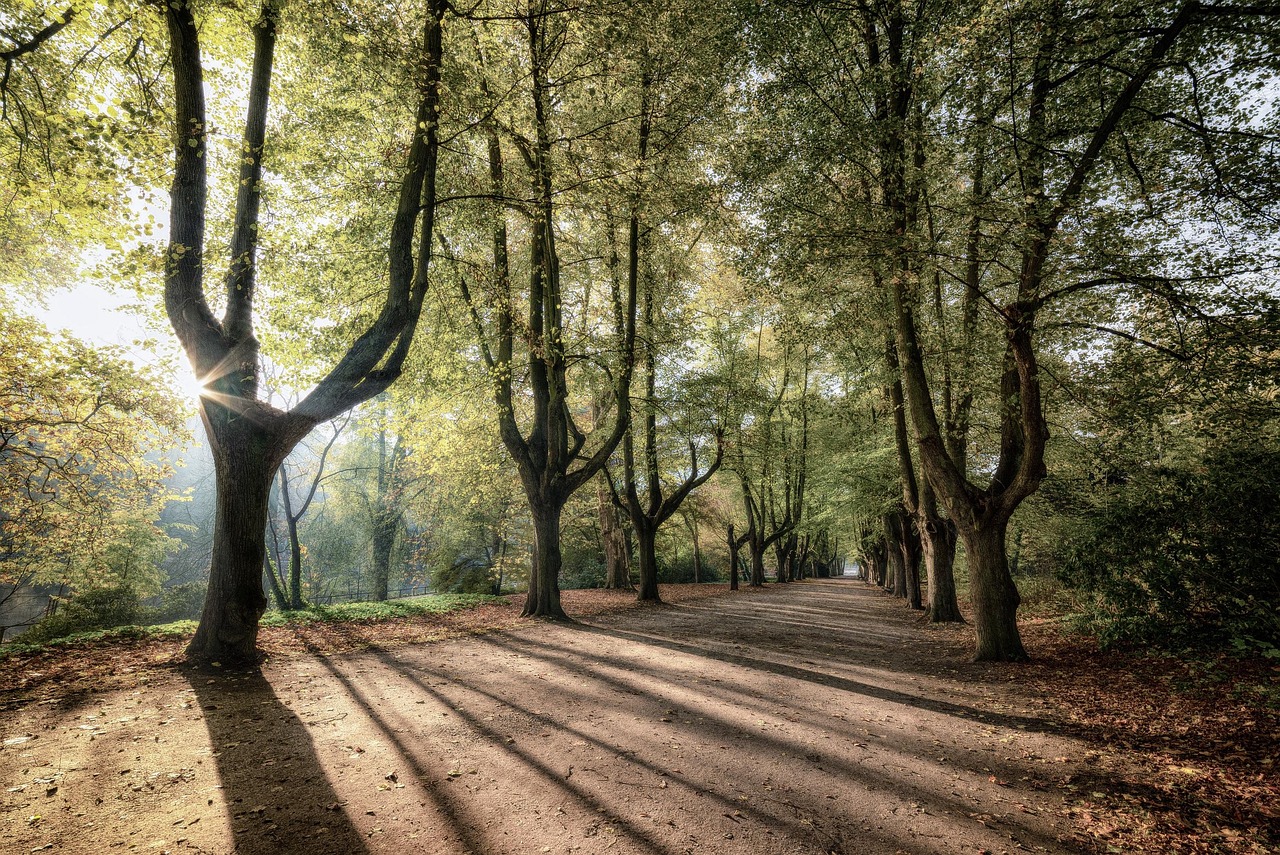The shadow of a tree influences space by creating cooler microclimates, altering soil moisture levels, and affecting the growth patterns of nearby plants. It can also impact human activities by providing shaded areas for recreation and reducing energy costs through natural cooling.
Understanding Tree Shadows
Trees play a vital role in our environment. One significant aspect is their ability to cast shadows. Tree shadows vary in size and shape, depending on the time of day, season, and the tree’s height and foliage density. As the sun moves across the sky, the length and direction of a tree’s shadow change, leading to various effects on the surrounding area.

Shadows can influence space in multiple ways. They create cooler areas, which can be beneficial for both wildlife and human comfort. Additionally, shadows impact how other plants grow nearby. Some plants thrive in shaded conditions, while others may struggle. Understanding these dynamics can help us appreciate the ecological balance that trees contribute to our environment.
The Role of Shadows in Microclimates
The microclimate created by a tree’s shadow is essential for several reasons. A microclimate is a small area with different climatic conditions than the surrounding region. Here are some key aspects of how tree shadows contribute to microclimates:
- Temperature Regulation: Tree shadows provide cooler temperatures during hot days, protecting both plants and animals from heat stress.
- Moisture Retention: Areas under tree shadows tend to retain moisture longer than exposed areas. This can benefit nearby plants by providing them with necessary hydration.
- Wind Protection: Trees can block winds, creating calm areas that enhance the comfort level for various organisms.
Effects on Plant Growth
Shadows significantly influence the growth patterns of nearby plants. Different species have varying light requirements. Some thrive in full sunlight, while others prefer partial or full shade. The presence of a tree can create a competitive environment for light, which affects plant diversity and health. Here are a few points to consider:

- Shade-Tolerant Plants: Species like ferns and certain wildflowers flourish in shaded conditions and can often be found in areas beneath tree canopies.
- Light-Demanding Plants: Conversely, plants that require full sunlight may struggle or die out if they are consistently overshadowed by trees.
- Competition for Resources: Trees may compete with smaller plants for water and nutrients, especially in dry conditions where resources are limited.
Influence on Human Spaces
The impact of tree shadows extends beyond natural ecosystems into human-designed spaces. Urban environments benefit significantly from trees and their shadows. Here are some ways tree shadows influence human activities:
| Benefit | Description |
|---|---|
| Recreation Areas | Trees provide shaded spaces for picnics, gatherings, and outdoor activities, enhancing the quality of parks and public spaces. |
| Energy Savings | Shaded buildings require less energy for cooling, leading to cost savings on air conditioning during hot months. |
| Aesthetic Appeal | Trees improve the visual landscape of urban areas, making them more inviting and enjoyable for residents and visitors. |
In summary, the shadows cast by trees have profound implications for both natural ecosystems and human environments. They create microclimates, affect plant growth patterns, and enhance recreational spaces. Understanding these influences helps us appreciate the importance of trees in our lives.
The Ecological Benefits of Tree Shadows
Tree shadows contribute significantly to ecological balance. They provide habitat for various organisms and enhance biodiversity in different ecosystems. By understanding the ecological benefits that arise from tree shadows, we can better appreciate their role in maintaining a healthy environment.

Habitat Creation
Tree shadows create unique habitats that support diverse wildlife. The cooler, shaded areas beneath trees offer refuge for many species. Some of the notable impacts include:
- Birds: Many bird species prefer nesting in the branches of trees or utilizing the shaded ground for foraging.
- Insects: Pollinators and other beneficial insects thrive in the protective environment of tree shadows, which helps in plant reproduction.
- Mammals: Smaller mammals often seek shelter under trees to avoid predators and harsh weather conditions.
Soil Health and Fertility
The presence of tree shadows can also influence soil health. The shaded areas promote a healthier soil ecosystem by:
- Reducing Erosion: The roots of trees help stabilize soil, preventing erosion caused by wind and water.
- Enhancing Organic Matter: Fallen leaves and organic material decompose under tree canopies, enriching the soil with nutrients.
- Promoting Microbial Activity: Shaded conditions foster a thriving community of soil organisms, which are crucial for nutrient cycling.
The Impact of Tree Shadows on Urban Planning
Urban planners increasingly recognize the value of trees and their shadows in city design. Incorporating trees into urban landscapes has various benefits, including improved air quality and enhanced livability. Here are some key considerations:
Air Quality Improvement
Trees play a critical role in purifying the air by absorbing pollutants and providing oxygen. They help mitigate urban heat islands, which is essential for maintaining a healthy environment. Here are some ways trees improve air quality:

- Pollutant Absorption: Trees absorb harmful gases such as carbon dioxide, sulfur dioxide, and nitrogen oxides.
- Particulate Filtration: Leaves trap dust, pollen, and smoke particles, improving overall air quality.
- Oxygen Production: Through photosynthesis, trees produce oxygen, which is vital for human and animal life.
Reducing Urban Heat
The heat generated by urban development can lead to increased temperatures in cities. Tree shadows help combat this issue by providing natural cooling through several mechanisms:
- Shade Provision: Trees block direct sunlight from hitting buildings and pavements, lowering surface temperatures.
- Evapotranspiration: Trees release moisture into the air through leaves, which cools the surrounding environment.
- Energy Efficiency: Reduced temperatures can lower the demand for air conditioning in nearby buildings, leading to energy savings.
Cultural Significance of Tree Shadows
Beyond their ecological and urban benefits, tree shadows hold cultural significance in many societies. They often represent tranquility and connection to nature. Here are some cultural aspects related to tree shadows:
Spiritual and Symbolic Meaning
Trees have been symbols of strength, wisdom, and life across various cultures. Their shadows often evoke feelings of peace and contemplation. Key points include:
- Cultural Practices: Many cultures engage in rituals or gatherings under trees, embracing their calming presence.
- Artistic Inspiration: Artists and poets frequently draw inspiration from the beauty of trees and their shadows.
- Historical Significance: Some trees are considered sacred or historically significant, serving as landmarks within communities.
Community Gathering Spaces
The shaded areas provided by trees serve as natural gathering spots for communities. They encourage social interaction and enhance community well-being. This can be highlighted through:
- Parks and Recreational Areas: Trees create inviting spaces for picnics, outdoor events, and leisure activities.
- Cultural Festivals: Many communities host events that take place under tree canopies, fostering a sense of unity.
- Children’s Play Areas: Parents often seek shaded spots where children can play safely while avoiding sun exposure.
The multifaceted influences of tree shadows extend from ecological benefits to cultural significances. Understanding these diverse aspects enhances our appreciation for trees and their integral role in shaping our environment.
Tree Shadows and Their Impact on Urban Heat Management
In urban areas, tree shadows play a crucial role in managing heat. As cities grow, they often become “heat islands,” where temperatures are significantly higher than in surrounding rural areas. This phenomenon is primarily due to concrete surfaces, buildings, and a lack of vegetation. Tree shadows offer a natural solution to combat this issue.
Understanding Urban Heat Islands
Urban heat islands (UHIs) arise from several factors, including human activities and infrastructure design. Here are some key contributors:
- Absorption of Heat: Dark surfaces like asphalt and concrete absorb and retain heat, raising local temperatures.
- Lack of Vegetation: The absence of trees and plants means less shade and reduced cooling through evapotranspiration.
- Energy Consumption: Increased use of air conditioning in buildings contributes to higher temperatures, as energy generation can release additional heat.
The Cooling Effect of Tree Shadows
Tree shadows provide an effective cooling method for urban environments. By blocking sunlight and facilitating moisture release, trees can help mitigate the effects of urban heat islands:
- Direct Shade: Trees shield buildings and outdoor areas from direct sunlight, reducing surface temperatures significantly.
- Evapotranspiration: Trees release moisture into the air through their leaves, cooling the surrounding environment naturally.
- Air Circulation: The presence of trees can enhance air circulation, allowing for cooler breezes in shaded areas.
Tree Selection for Maximum Shade Benefits
Choosing the right tree species is essential for maximizing shade benefits in urban settings. Different species provide varying levels of coverage and environmental benefits. Here are some factors to consider when selecting trees:
Shade Coverage
The amount of shade a tree provides depends on its size, shape, and leaf density. Here are some trees known for their excellent shade capabilities:
| Tree Species | Shade Characteristics |
|---|---|
| Oak | Large canopy with dense foliage; provides extensive shade. |
| Maple | Broad leaves create significant shade during summer months. |
| Pine | Evergreen tree that provides shade year-round, though less effective in summer heat. |
| Elm | Wide canopy that offers ample shade and is adaptable to various environments. |
Environmental Considerations
When selecting trees, it’s also important to consider their environmental impact. Factors to keep in mind include:
- Drought Resistance: Choose species that can thrive in local soil and climate conditions without excessive water needs.
- Pest Resistance: Select trees that are less susceptible to local pests, reducing maintenance needs.
- Natives vs. Exotics: Native species often provide better habitat for local wildlife and require less care than non-native species.
The Psychological Benefits of Tree Shadows
The presence of trees and their shadows offers psychological benefits to individuals in urban settings. Research has shown that exposure to green spaces can improve mental health and overall well-being:
Stress Reduction
Being in shaded areas under trees can significantly reduce stress levels. Some ways this occurs include:
- Nature Connection: Spending time in nature can enhance feelings of tranquility and relaxation.
- Aesthetic Appeal: The beauty of trees and natural landscapes can elevate mood and promote happiness.
- Cognitive Restoration: Natural environments provide restorative experiences that can improve focus and creativity.
Community Cohesion
Trees and their shadows foster community interaction. Green spaces encourage socialization among neighbors, leading to stronger community bonds. Here are some aspects to consider:
- Shared Spaces: Areas with trees often become popular spots for gatherings, promoting social connections.
- Cultural Identity: Community events held under trees can strengthen local culture and identity.
- Increased Safety: Well-maintained tree-lined areas can enhance feelings of safety and security for residents.
The multifaceted impact of tree shadows on urban heat management, tree selection for shade benefits, and psychological advantages highlight the importance of integrating trees into our environments. By doing so, we not only enhance aesthetic appeal but also promote a healthier, more connected community.
The Role of Tree Shadows in Urban Biodiversity
Tree shadows not only provide shade and aesthetic value but also play an essential role in promoting urban biodiversity. In densely populated areas, maintaining a diverse ecosystem is crucial for environmental health and stability. Here are several ways tree shadows contribute to urban biodiversity:
Supporting Flora and Fauna
The shaded areas created by trees can foster a variety of plant and animal species that may not thrive in direct sunlight. Some key points include:
- Habitat Diversity: Different species of plants can coexist under the canopy of trees, creating microhabitats that support various wildlife.
- Pollinator Support: Shaded environments often attract pollinators like bees and butterflies, which are essential for plant reproduction.
- Food Sources: Trees provide fruits, nuts, and seeds that serve as food for birds, insects, and small mammals.
Enhancing Ecological Resilience
Urban areas face numerous environmental challenges, including climate change and habitat loss. The presence of tree shadows can enhance ecological resilience by:
- Climate Mitigation: Trees help sequester carbon dioxide, a major greenhouse gas, thus playing a role in combating climate change.
- Soil Improvement: The organic matter from fallen leaves enriches the soil, promoting healthier plant growth and better water retention.
- Biodiversity Corridors: Trees can act as corridors connecting fragmented habitats, allowing wildlife to move safely through urban landscapes.
Tree Shadows Across Different Cultures
The significance of tree shadows extends beyond ecological and urban benefits. Different cultures have unique relationships with trees and their shadows, reflecting their values and traditions. Here are some cultural perspectives:
Symbolism in Various Cultures
Trees and their shadows hold symbolic meanings across different societies:
- Spiritual Significance: In many cultures, trees are seen as sacred beings that connect the earth with the heavens. Their shadows represent peace and reflection.
- Folktales and Myths: Numerous folktales feature trees as central figures that embody wisdom, strength, or protection.
- Art and Literature: Artists and writers throughout history have used trees and their shadows as powerful symbols in their work.
Community Rituals and Gatherings
Cultural practices often revolve around trees, showcasing their importance in social settings:
- Festivals: Many communities celebrate seasonal festivals under the shade of trees, highlighting their role in cultural identity.
- Rituals: Some cultures perform rituals under trees to honor nature or commemorate significant events.
- Education: Trees serve as outdoor classrooms where children learn about nature, ecology, and community values.
Final Thoughts
The influence of tree shadows on space is profound and multifaceted. From providing essential cooling in urban heat islands to supporting biodiversity and enhancing community cohesion, the role of trees is integral to our environments. They offer a sanctuary for wildlife while enriching human experiences through cultural practices and aesthetic beauty.
By understanding the various ways tree shadows affect ecosystems, urban planning, and cultural identity, we can work toward creating sustainable environments that honor the natural world. As we continue to develop our urban landscapes, prioritizing trees will not only enhance the quality of life but also foster a healthier planet for future generations.
In conclusion, the shadows cast by trees are much more than mere dark patches on the ground; they are vital components of our ecological systems, cultural heritage, and urban planning efforts. Embracing the significance of trees in our lives is essential for promoting well-being, sustainability, and harmony within our shared spaces.
